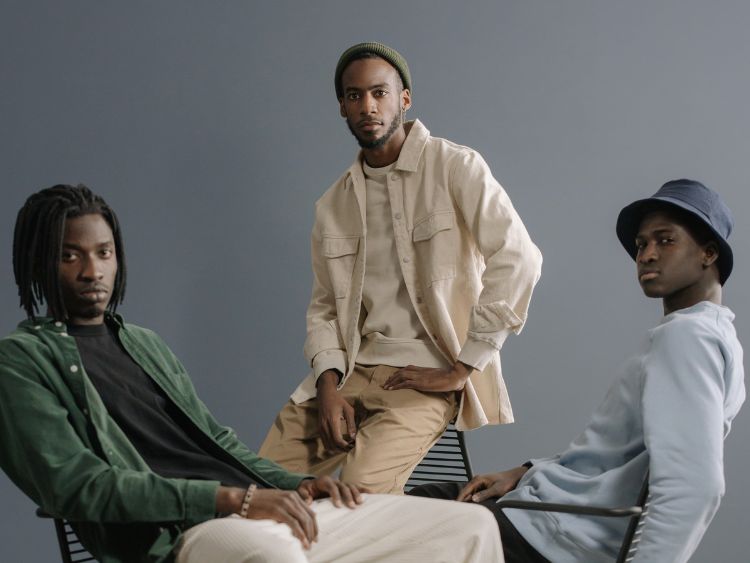The Fashion Revolution of the Roaring Twenties
Ah, the Roaring Twenties—a time of jazz, speakeasies, and groundbreaking fashion! This was the decade when style took a dramatic leap forward, reflecting the era’s newfound spirit of freedom and rebellion. From bold flapper dresses to sleek suits, Roaring 20s fashion set the stage for modern trends. So, what made this era so special? Let’s dive into the glitzy details and unravel the magic.
The Foundations of 1920s Style
The fashion of the 1920s didn’t just appear out of thin air. It was influenced by:
- World War I Aftermath: With the war over, people wanted to celebrate life. Fashion became a way to express joy and liberation.
- Women’s Rights Movement: Women gained the right to vote in many countries, and their newfound independence was reflected in their bold clothing choices.
- Technological Advancements: Mass production made trendy clothing more accessible to the average person.
These factors combined to create a seismic shift in how people dressed, leading to the birth of a truly iconic style.
Women’s Fashion: The Flapper Phenomenon
When you think of Roaring 20s fashion, the flapper dress likely comes to mind. But what exactly defined this look?
Key Features of Flapper Dresses:
- Dropped Waistlines: These dresses featured a loose, relaxed fit, perfect for dancing the Charleston.
- Short Hemlines: For the first time, women showed off their legs with hemlines that rose to the knees—scandalous for the time!
- Fringe and Beads: Movement was key, and embellishments like fringe and beads accentuated every twirl on the dance floor.
Accessories to Match:
- Headpieces: Think feathered headbands or sequined caps.
- Stockings: Often paired with garters, silk stockings completed the flapper look.
- Jewelry: Long pearl necklaces and bold art deco earrings were all the rage.
Makeup and Hair:
Flappers didn’t stop at just their clothing. They embraced:
- Dark Smoky Eyes: The dramatic eye look became a staple.
- Bobbed Hairstyles: Women chopped off their locks in favor of sleek, chin-length bobs.
- Red Lips: A bold, matte red lip screamed confidence and rebellion.
Men’s Fashion: Dapper and Debonair
Men’s fashion in the 1920s was just as stylish, albeit more understated. The quintessential look was all about sharp tailoring and accessorizing.
Staples of Men’s Wardrobes:
- Three-Piece Suits: Complete with vests, these suits were impeccably tailored.
- Wide-Lapelled Jackets: A defining feature of the decade’s suits.
- Oxford Shoes: These polished leather shoes were a must-have.
Accessories and Hairstyles:
- Pocket Watches: An elegant timepiece added a touch of class.
- Flat Caps and Fedoras: Hats were non-negotiable for men stepping out in public.
- Slicked-Back Hair: Men kept their hair neat with pomade, creating that iconic shiny finish.
The Role of Fabrics and Patterns
The textiles and patterns of the 1920s were as diverse as the era itself. Popular choices included:
- Silk and Satin: For evening wear, these fabrics exuded luxury.
- Tweed and Wool: Common in men’s suits and women’s outerwear.
- Geometric Patterns: Art deco designs inspired bold, symmetrical patterns in clothing and accessories.
Roaring 20s Fashion for Evening Wear
When the sun went down, the fashion stakes went up. Evening wear was a spectacle of glamour and excess.
Women’s Evening Attire:
- Gowns with Plunging Backs: These dresses were designed to turn heads.
- Sequins and Glitter: Sparkly embellishments caught the light on the dance floor.
Men’s Evening Attire:
- Tuxedos: Black or white tuxedos were the epitome of formal elegance.
- Bow Ties and Cummerbunds: These accessories added a polished finish.
Everyday Wear: Beyond the Glitz
While the flapper dresses and tuxedos stole the show, everyday fashion in the 1920s was also a statement of the times.
For Women:
- Day Dresses: Practical but stylish, often made from cotton or wool.
- Cloche Hats: These snug-fitting hats were a daytime essential.
- Cardigans and Sweaters: Women embraced knitwear for casual occasions.
For Men:
- Casual Suits: Yes, even casual meant wearing a suit—just without a tie.
- Knickerbockers: These knee-length trousers were paired with socks and a blazer.
How Roaring 20s Fashion Influences Modern Trends
Believe it or not, the 1920s are still shaping today’s fashion. Here’s how:
- Flapper-Inspired Dresses: Modern evening wear often borrows elements like fringe and sequins.
- Bold Accessories: Long necklaces and art deco jewelry remain in vogue.
- Tailored Suits: The sharp lines of 1920s menswear are echoed in contemporary business attire.
FAQs About Roaring 20s Fashion
1. What made 1920s fashion unique?
The 1920s marked a departure from restrictive Victorian clothing. It embraced freedom, boldness, and a sense of rebellion, reflected in shorter hemlines, looser fits, and extravagant embellishments.
2. Why are flapper dresses so iconic?
Flapper dresses symbolize the spirit of the Roaring Twenties: fun, freedom, and a break from tradition. Their short hemlines and elaborate decorations made them stand out.
3. Did men’s fashion change as much as women’s during the 1920s?
Absolutely! Men’s fashion in the 1920s shifted towards more relaxed tailoring while maintaining a sharp, polished appearance.
4. How can I incorporate Roaring 20s fashion into my wardrobe today?
Start with accessories! Add art deco-inspired jewelry, a cloche hat, or a tailored vest to your modern wardrobe.
5. Was 1920s fashion influenced by global events?
Yes! The end of World War I, the rise of jazz culture, and technological advancements all played a significant role in shaping the fashion of the era.
Summary: Why the Roaring Twenties Still Roar
The Roaring 20s fashion wasn’t just about clothes; it was a cultural statement. It celebrated freedom, individuality, and a break from the past. From flapper dresses to dapper suits, the styles of the 1920s continue to inspire and captivate us today.
Authoritative Sources:
- https://fashionhistory.fitnyc.edu/1920-1929
- https://www.metmuseum.org/toah/hd/afas/hd_afas.htm
- https://www.history.com/topics/1920s
